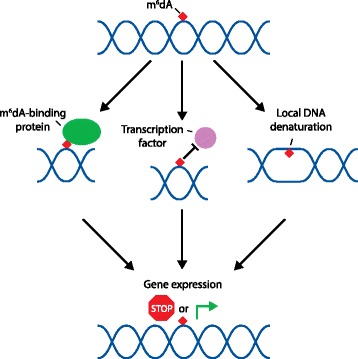Fig. 1.

Methylated deoxyadenosine (m 6 dA) residues in DNA have the potential for multiple functions within the eukaryotic genome. m6dA residues might recruit m6dA-binding proteins (left), or m6dA might prevent the binding of transcription factors (middle). In addition, because N 6 methylation of adenosines can influence Watson:Crick base pairing, m6dA might act by inducing local DNA denaturation (right). Any or all of these possible functional roles for m6dA have the potential to influence transcription or other modes of gene expression. Whether m6dA acts primarily by repressing or promoting gene expression remains to be determined
